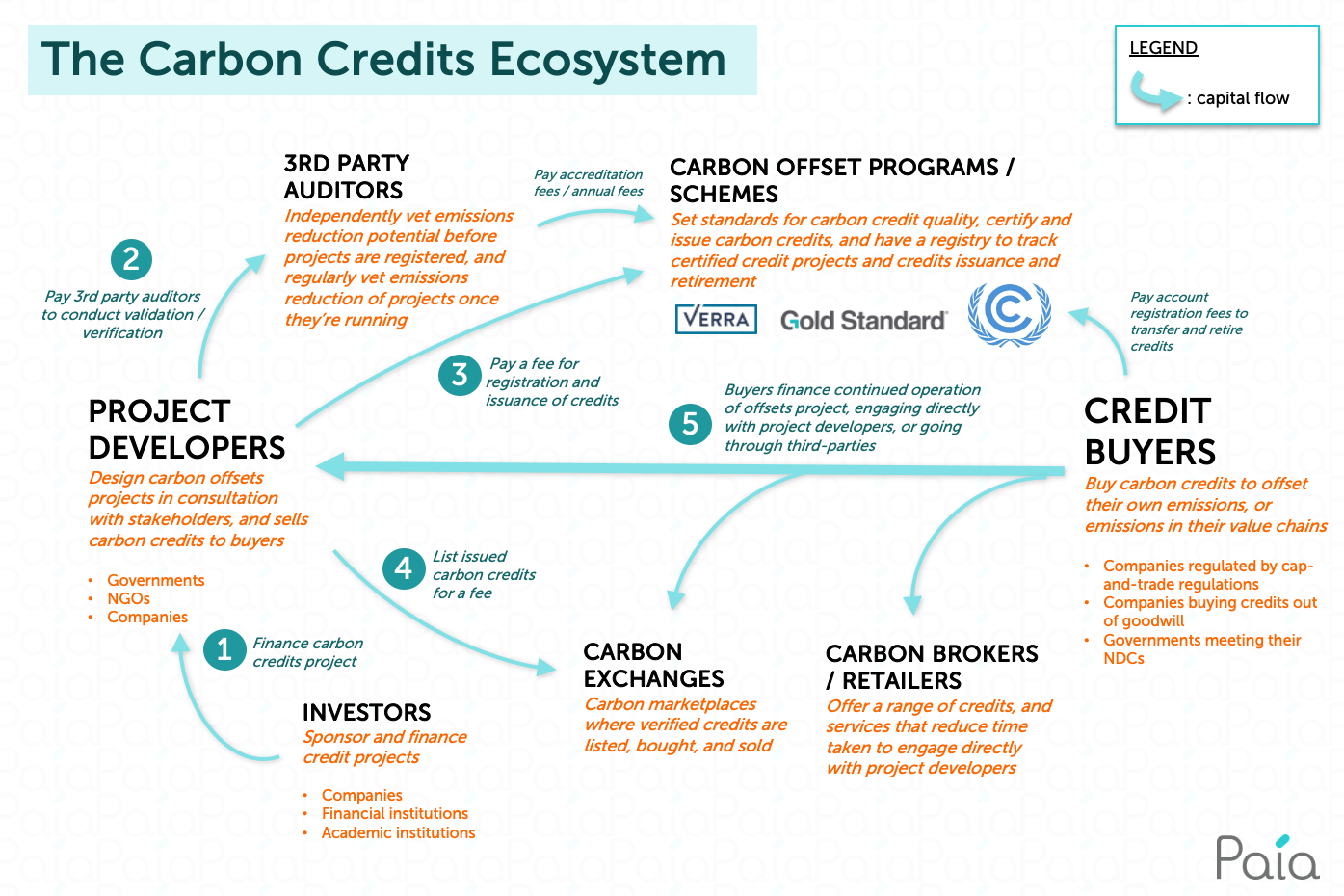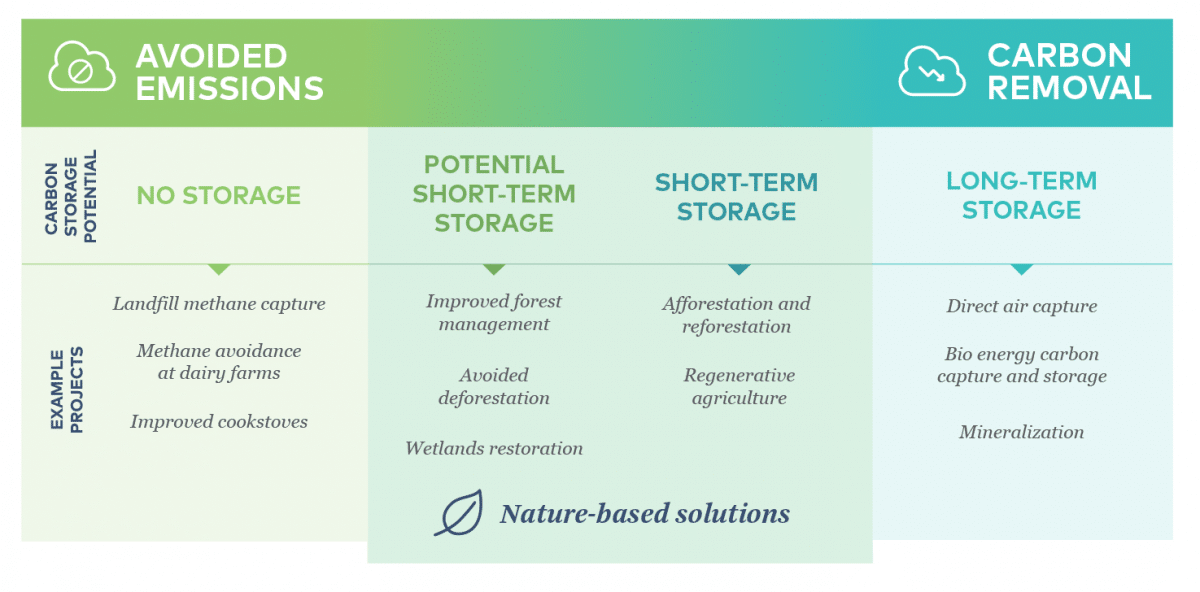Certified vs non-certified carbon offsets: get me up to speed
Selva
4 min read
3/28/2022
Share
Variety is the spice of carbon life
The world of carbon offsetting can be as complex as a 10-sided Rubiks cube. There are different types of offsets, different qualities, different prices, different everything. There’s enough nuance and variation in this young but rapidly growing sector to keep you busy and bemused for light years.
We’re here to talk you through yet another (I know,sorry) complexity of the system: certified vs non-certified carbon offsets. As always, we’ll do our best to keep it free of boring jargon and unnecessary science-talk.
Before we jump in, if you need a little refresher on what carbon offsets actually are and why they are so important, then check out our article here to get up to speed.
What the difference? Let’s start with certified offsets
The smart readers amongst you will guess that one of these forms of offsets has some particular form of certification or verification, whereas the other doesn’t. Spot on.
To try and improve standards, transparency and consistency in the murky world of carbon offsets, various independent agencies like Gold Standard and Verra have been set-up to determine what counts as a certified carbon offset and what doesn’t. The idea being that if a carbon mitigation project such as a reforestation initiative in Brazil or landfill gas capture in Spain meets the rigorous standards of these agencies, then they can get an independent stamp of approval that demonstrates their quality to buyers of the offsets. One tonne of carbon certifiably removed or reduced = one carbon offset certificate that can be sold.
These buyers, usually business wanting to compensate for their emissions as part of voluntary corporate “net-zero” pledges, can sleep better at night with this extra level of assurance that their money is going to a certified carbon mitigation project, rather than the back pocket of some corrupt landowner (although certification doesn’t always guarantee legitimacy).
How do these organisations decide what to certify as an offset? Good question. There are usually three key criteria that these verification agencies look for:
- Permanence – will the carbon that has been absorbed by the project remain indefinitely captured or will it return to the atmosphere at some point? For example, it’s no use buying a carbon credit that represents a ton of CO2 absorbed by a tree that burns down the next day.
- Additionality – does the carbon mitigation project actually reduce total CO2 emissions compared with what would have happened if the project never existed? Is there additional benefit? This concept most frequently comes into play when assessing rainforest protection carbon offset projects. These projects generate offsets on the grounds that they are preventing deforestation and therefore carbon emissions. But how can anyone ever be sure that those trees would definitely have been chopped down if the project never existed... Counterfactuals like this are complex and hard to prove.
- Leakage – does the initiative ensure that the carbon emissions don’t just move elsewhere? For example, preventing rainforest destruction may just mean that more trees are cut down elsewhere
If you can prove all of these, and the agency can quantify the carbon impact of your project, then you’re good to go.

So, what about uncertified projects?
We should start by saying that just because a project isn’t certified by one of the leading agencies, it doesn’t mean that it is any less trustworthy and that it doesn’t seek to satisfy the three criteria laid out above.
These projects have either chosen not to get certified because of the cost and time involved e.g. small-scale reforestation, or they involve emerging technologies that are too early stage or unsuited to assessment by the traditional agencies e.g. companies like Heirloom that are doing enhanced weathering carbon removal – a process where special rocks react with and capture CO2 in the air.
If a project isn’t certified but still wants to sell its work as carbon reduction then it usually makes its own estimates of the amount of CO2 that it is, or is planning to, remove/avoid. Often third-party scientists and academics will weigh in to help with these estimates (check out NGO CarbonPlan’s database on carbon removal projects for their analysis of different projects). It is then up to potential buyers to decide how credible these estimates are when they are thinking of purchasing them.
Ok, but which is better? Certified or non-certified?
I know this is the worst answer but, it depends. Each buyer will have its own priorities and preferences. Large corporations implementing a sustainability strategy or a net zero plan, for example, will often play it safest and are willing to pay the premium for this accreditation to minimize any risk of reputational damage.
Meanwhile, other buyers like individuals or smaller businesses, which are often less constrained by external pressures and do not require the precision and validation of certification, may prefer projects where they can have the most impact for the lowest cost, regardless of accreditation status. If trust and transparency can be achieved without the extra cost of certification, then all the better. This is Selva’s approach – more on that shortly.
Then there are buyers like Stripe and Microsoft whose motivations are less about offsetting their own carbon footprint and more about supporting breakthrough technologies that may be able to make big strides in reducing / removing significant quantities of CO2 from the atmosphere in the near future.
Stripe is spending millions every year on frontier carbon removal technologies like direct air capture, enhanced weathering, and kelp (seaweed) farming, at a cost of up to $775/tonne of CO2, in an attempt to help these technologies grow. For context, the current cost of a forest carbon offset is about $10-$15/tonne. So Stripe is paying welllll above market rates, and effectively providing upfront financing to these projects as many are not absorbing material volumes of CO2 yet, to support them in the hope that they can scale massively in the future.

What type of verification does Selva do?
Here at Selva, our goal has always been to get as many trees in the ground as possible, so long as they are the right tree in the right place. We want as much carbon bang for our buck as we can get and so decided to look for non-verified but highly trustworthy and transparent reforestation projects. And, to avoid the issues of additionality associated with rainforest protection, we searched exclusively for reforestation partners. I.e. we’re planting new trees that would not have existed without our money – there is no question about the impact.
We found exactly what we were looking for in our partners Eden Reforestation and Trees for the Future. Our other partner, TIST, is certified by Verra, so that we can cater to our users who want that extra third-party accreditation.
So if they aren’t certified, how can you trust them? Well, there are many other ways that organisations can display their capability and credibility, such as experience, passion, external rewards and recognition, and other discerning customers.
Our partners have all of these in spades, having won numerous charitable awards, and are trusted by big brands like the Bezos Earth Fund and Timberland who they also plant for. We know that our trees are in very safe hands.
What we’re trying to say is…
Whether you prefer certified or non-certified projects is up to you and your preferences. The perfect carbon offset doesn’t really exist but there are many great, honest projects out there on both sides of the debate that are worthy of our support. The key thing is to look for genuine additional impact: where will my money make the biggest positive difference?
We’ve selected three of those projects as partners for us at Selva. Join us today and know that your hard-earned cash is going to the best in the reforestation business.
